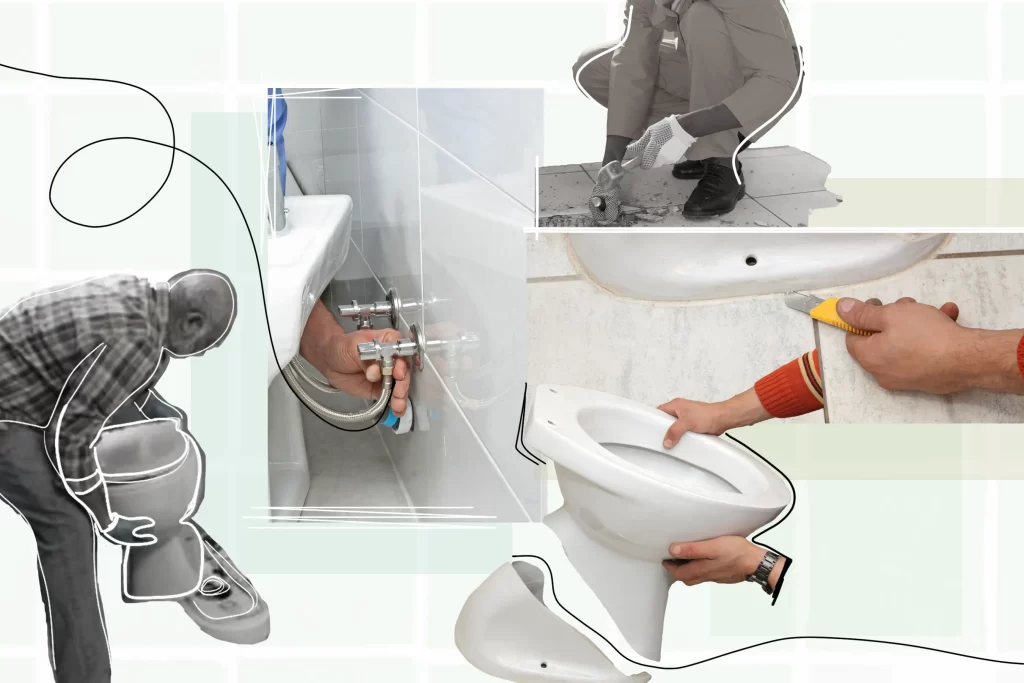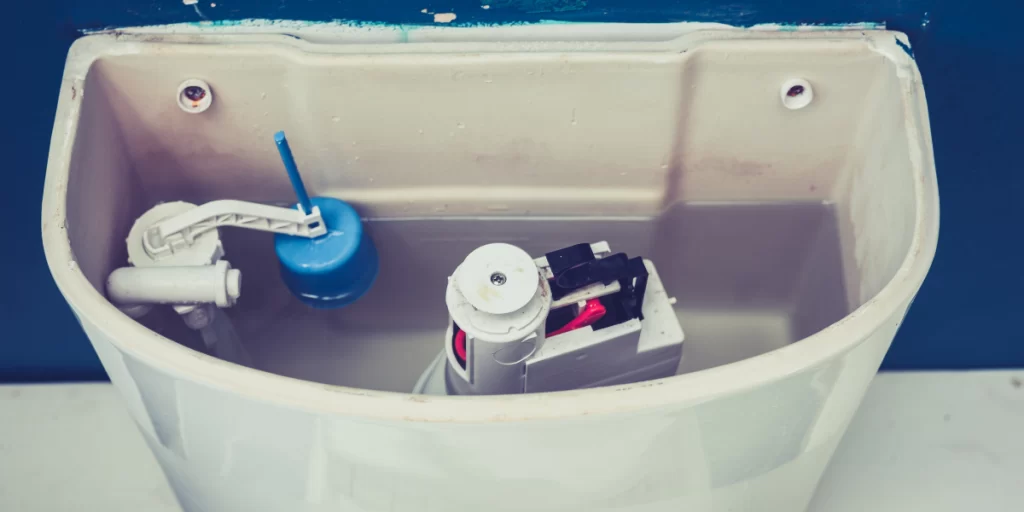1. Introduction

Ah, the age-old problem of “no water in toilet tank.” We’ve all been there, haven’t we? You flush the toilet, and instead of the familiar sound of water refilling the tank, there’s… silence. As an experienced plumber, I’ve seen this issue countless times. But don’t worry! With a bit of guidance, you can diagnose and fix this problem like a pro. So, let’s dive deep into the world of toilet repair and get that tank filled with water again!
A brief overview of the common issue of no water in the toilet tank.
No water in the toilet tank is a common household repair issue. It can be caused by various factors, from a simple water shut-off valve being turned off to more complex issues with the plumbing system. But fear not! With the right tools and knowledge, correcting this issue is often a straightforward task.
Importance of understanding the causes and solutions.
Understanding the root causes of this toilet problem is crucial. Not only does it help in diagnosing the issue quickly, but it also ensures that you apply the correct fix. Plus, with a deeper understanding, you can prevent water issues in the future, ensuring your toilet functions efficiently for years to come.
2. Common Causes of No Water in Toilet Tank

If you’re facing the issue of no water in the toilet tank, you’re not alone. Many homeowners encounter this problem, and while it might seem daunting at first, with a bit of guidance, you can tackle it head-on. Let’s delve deeper into the common causes and their solutions.
2.1. Water Supply Issues
Checking if the water is turned on.
Before diving into complex solutions, let’s start with the basics. Sometimes, the simplest answer is the right one.
- First, check the water shut-off valve located under your toilet. Ensure it’s turned on. If it’s turned off, simply turn the water on, and your tank should start refilling.
- Next, remove the toilet tank lid and inspect the water level. If it’s low or non-existent, you might have a water supply issue.
Possible larger water supply issues.
If you’ve confirmed that the water is turned on and there’s still no water in your toilet tank, it might be a larger water supply issue.
- Check other plumbing fixtures in your home, like the bathroom sink faucet. If they’re also not getting water, it might be a problem with your water company or a blockage in plumbing.
- Reach out to your neighborhood office or water company to see if there are any ongoing water line troubles or maintenance works.
2.2. Float Mechanism Malfunctions

Explanation of the float ball in older toilets.
In older toilets, the float ball plays a crucial role. It’s a small ball that floats on the water inside the tank. As the tank fills with water, the float ball rises, signaling the water flow to stop once it reaches a certain level.
How incorrect positioning or a faulty arm can affect water levels.
- If the float ball is positioned incorrectly or the float arm is damaged, it can prevent water from entering the tank.
- Adjusting the float arm or replacing a faulty float ball can often solve the issue. Remember, if the float mechanism isn’t working correctly, it can’t signal the toilet to refill the tank after you flush the toilet.
2.3. Fill Valve Adjustments
Introduction to the fill valve in newer toilets.
Newer toilets come equipped with a fill valve instead of the traditional float ball mechanism. This valve controls the water flow into the tank and ensures the tank is filled properly after every flush.
Importance of its position and potential blockages.
- The position of the fill valve is crucial. If it’s set too low, it might not allow enough water into the tank. On the other hand, if it’s set too high, it can lead to an overflow.
- Hard water and mineral buildup can lead to blockages in the fill valve. Regular cleaning and maintenance can prevent this.
2.4. Trip Assembly Problems
The connection between the flush handle and the tank.
The trip assembly is what connects your flush handle to the tank. When you push the handle to flush the toilet, the trip assembly activates the flush cycle.
How a damaged trip assembly can leave the tank empty?
- If the trip assembly is worn out or damaged, it might not activate the flush cycle properly, leaving your tank void of water.
- Inspecting the trip lever assembly and replacing any busted components can often solve the issue.
3. Solutions to Restore Water in Toilet Tank

So, you’ve diagnosed the problem of no water in the toilet tank, but now comes the crucial part – fixing it. As your friendly neighborhood plumber, I’m here to guide you through the solutions step by step. Let’s roll up our sleeves and get that toilet tank filled with water once more!
3.1. Checking and Turning On the Water Supply
Steps to verify the water source.
- First and foremost, ensure the water shut-off valve under the toilet is in the ‘on’ position. It’s a common oversight, but sometimes it’s accidentally turned off.
- If you’ve recently had any plumbing repair or maintenance, double-check that the water supply hasn’t been turned off elsewhere in your home.
- Test other water sources in your home, like the bathroom sink faucet. If they’re working fine, the issue is likely localized to your toilet.
3.2. Repositioning or Replacing the Float Mechanism

Adjusting the float ball and arm.
The float ball and arm play a pivotal role in ensuring water enters the tank after you flush the toilet. Here’s how to adjust them:
Remove the toilet tank lid and locate the float ball. It should be floating on the water’s surface. If the float ball is submerged or sitting too low, gently bend the float arm upwards to raise it. This will allow more water to fill the tank. Conversely, if the water level is too high, bend the float arm downwards.
When to consider replacing the entire mechanism.
If adjusting doesn’t do the trick, or if you notice the float ball is damaged or the float arm is broken, it might be time for a replacement. Modern toilets often use a float cup mechanism, which is more efficient and less prone to issues than the traditional float ball.
3.3. Adjusting and Cleaning the Fill Valve
Steps to adjust the fill valve for optimal water levels.
The fill valve is the heart of the toilet’s water supply system. Here’s how to adjust it:
- Locate the adjustment screw on the fill valve. Using a flathead screwdriver, turn it clockwise to increase the water level and counter-clockwise to decrease it.
- Ensure the overflow tube isn’t submerged. If it is, you’ve got too much water in the tank.
Cleaning methods to remove mineral buildup.
Hard water can be a real pain, leading to mineral buildup in the fill valve.
- Turn off the water supply and flush the toilet to empty the tank.
- Remove the fill cap and use a bottle brush to scrub away any debris or mineral deposits.
- For stubborn blockages, consider using a gentle descaling solution.
3.4. Repairing or Replacing the Trip Assembly
Identifying a damaged trip assembly.
The trip assembly is what makes the magic happen when you push that flush handle. If it’s damaged, your tank might remain void of water.
Inspect the trip lever assembly. Look for signs of wear, corrosion, or damage. Test the flush handle. If it feels loose or doesn’t spring back after being pressed, the trip assembly might be the culprit.
Steps for replacement.
- Turn off the water supply and flush the toilet.
- Remove the old trip assembly by unscrewing it from the flush handle.
- Install the new assembly, ensuring it’s securely attached to both the handle and the flapper chain.
- Turn the water back on and test the flush.
4. When to Seek Professional Help
Ah, the age-old question: “When should I call in the experts?” While many of the issues related to no water in the toilet tank can be fixed with a bit of DIY spirit, there are times when it’s best to let a professional handle the situation.
Recognizing when DIY solutions aren’t enough.
- Persistent Issues: If you’ve tried multiple solutions and the problem persists, it might be time to call in a professional. Sometimes, the issue might be deeper than it appears.
- Unfamiliar Sounds: If your toilet or plumbing starts making unfamiliar noises, it’s a sign that something might be off.
- Visible Damage: Cracks in the toilet bowl, or tank, or visible damage to any components should be addressed by a professional to prevent further complications.
Benefits of hiring a professional plumber.
Expertise: An experienced plumber has seen it all. They can quickly diagnose and fix the issue, saving you time and potential future repair costs.
- Tools: Professional plumbers come equipped with the necessary tools for any job, ensuring that the repair is done efficiently.
- Guarantee: Most plumbing services come with a satisfaction guarantee, giving you peace of mind that the job is done right.
5. Conclusion
Recap of the importance of addressing the issue.
No water in the toilet tank might seem like a minor inconvenience, but it can be indicative of larger plumbing problems. Addressing the issue promptly ensures that your toilet functions optimally and can prevent more significant, costly repairs down the line.
Encouragement for regular toilet maintenance.
Regular maintenance is the key to a long-lasting, reliable toilet. By routinely checking the components, cleaning, and making necessary adjustments, you can ensure that your toilet serves you well for years to come. And remember, if in doubt, don’t hesitate to seek professional assistance.
FAQs:
1. Why is there no water in my toilet bowl even though the tank is full?
This could be due to a faulty flapper or a blockage in the overflow tube. Ensure the flapper is sealing properly and that there’s no debris blocking the overflow tube.
2. How often should I check the components inside my toilet tank?
It’s a good practice to inspect the components inside your toilet tank every 6 months. Regular checks can help you spot and address issues before they escalate.
3. Can I fix the “no water in toilet tank” issue myself, or should I always call a plumber?
Many issues related to no water in the toilet tank can be addressed with DIY solutions. However, if you’re unsure or if the problem persists after trying multiple solutions, it’s best to call a qualified plumber for a thorough toilet diagnosis.

